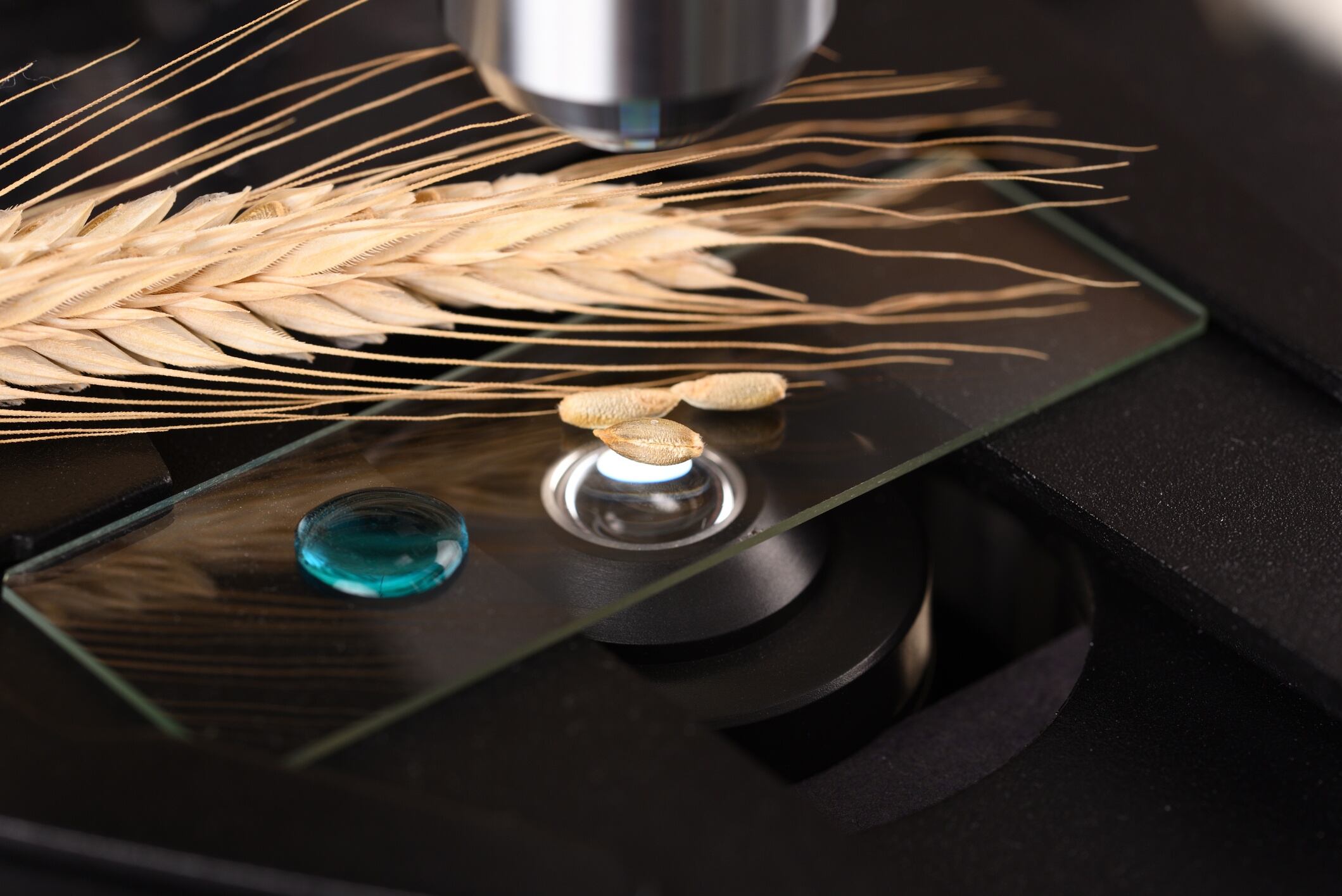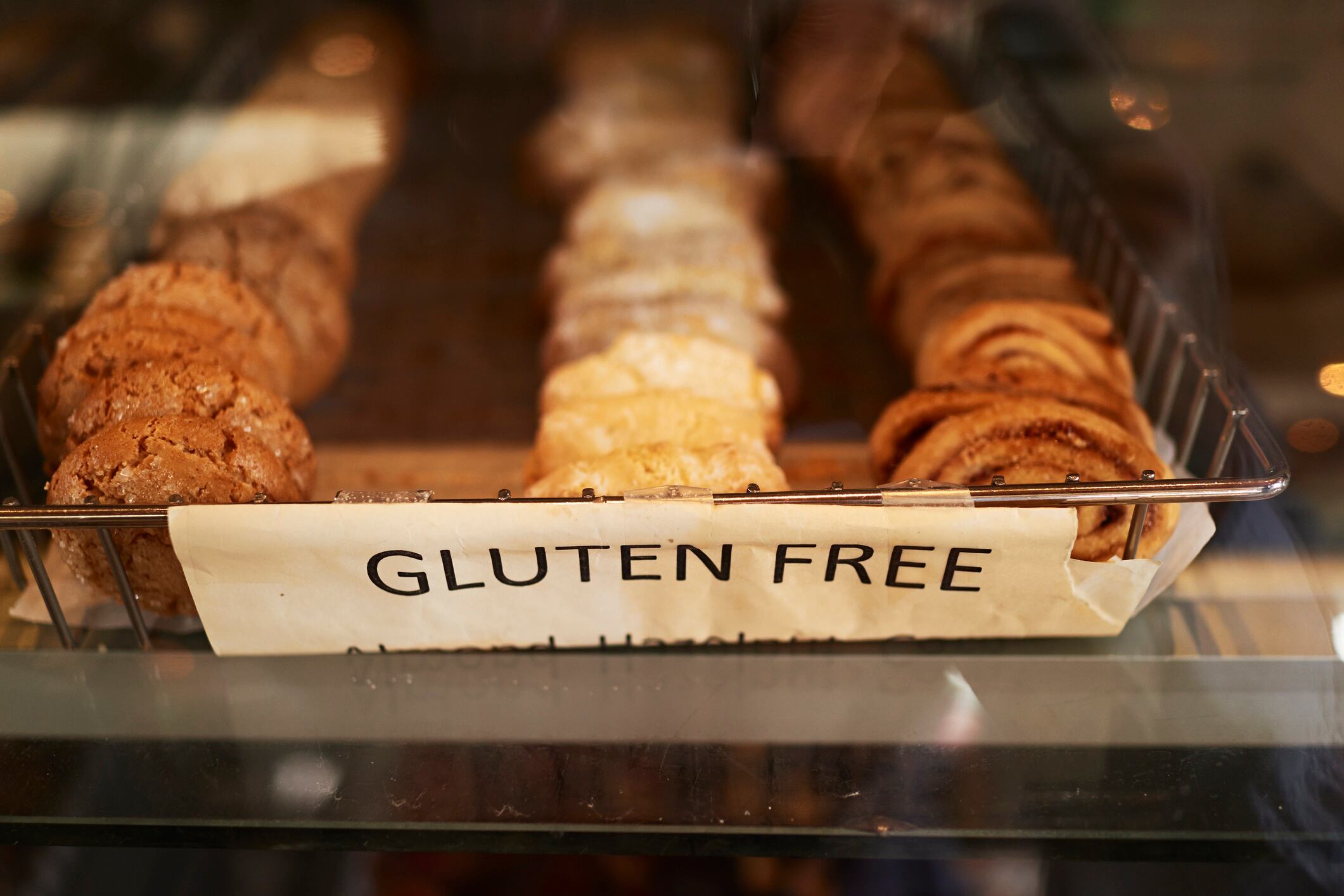Key takeaways:
- Researchers are using CRISPR to develop low-gluten wheat that maintains traditional baking performance.
- Scientists have identified how intestinal cells trigger celiac reactions, paving the way for future treatments.
- A new handheld gluten detector delivers rapid, accurate results, improving safety and trust in gluten-free foods.
Not so long ago, gluten was public enemy number one. Food aisles filled with gluten-free everything – bread, biscuits, even beer – and the bakery industry scrambled to keep up. Yet for all the innovation, there’s been a nagging truth: gluten-free rarely feels the same. The chew, the lift, the flavor – they’re hard to replicate.
But three new research projects are challenging that narrative. Scientists are learning how to tame gluten’s bad behavior rather than banish it. And they’re doing it from three very different angles – crop genetics, gut biology and food tech. Together, they suggest a future where gluten-free might not mean compromise at all.
For bakery manufacturers, this isn’t just a medical curiosity. It’s a glimpse of what could be next for an industry built on wheat. The gluten-free category may be worth billions, but it’s built on substitutes and workarounds. What happens if science gives us wheat that everyone can eat – or at least wheat that’s far less likely to cause trouble?
The science reshaping gluten-free baking
CRISPR wheat: Kansas State University’s project to tone down gluten proteins without losing dough performance.
Gut insight: McMaster University’s discovery that intestinal cells actively trigger gluten’s immune response.
Smart testing: The LEO device delivers gluten detection in under three minutes with a smartphone readout.
Editing the wheat, not the recipe

Researchers at Kansas State University are attempting something the wheat world has long dreamed of: a low-gluten variety that keeps its baking performance.
Led by Prof Eduard Akhunov from K-State’s Department of Plant Pathology, the team is using CRISPR-Cas9 gene-editing to identify and switch off the wheat proteins that trigger celiac reactions. Since the project’s launch in 2023, K-State has reported early success — cutting immunotoxic gluten proteins by as much as 47-fold while preserving dough strength in experimental wheat lines.”
The project, supported by a $990,000 grant from the Foundation for Food and Agriculture Research, is a collaboration between K-State, UC Davis, the California Wheat Commission, Kansas Wheat and the Celiac Disease Foundation. Prof Akhunov calls it “a delicate balance” – removing the problematic parts of gluten without ruining the very qualities that make wheat unique.
The science builds on a 2023 K-State breakthrough that produced experimental wheat lines with lower levels of allergenic gluten proteins. Now the team is going further, targeting specific genes while testing whether the dough still holds together. If successful, this research could open the door to a new market: celiac-friendly wheat flour that behaves like the real thing.
For bakers, it’s easy to see the appeal. These lines remain experimental and years away from commercialization, but they mark the clearest proof yet that low-immunogenic wheat could be viable without sacrificing bread-making quality. Rather than relying on rice, tapioca or potato starch blends – all of which drive up costs and compromise texture – a low-gluten wheat could bring the industry closer to parity between free-from and regular lines.
Finding where it all goes wrong

While crop scientists are busy re-engineering wheat, another group of researchers is looking inside the body to find out how gluten causes damage in the first place.
A team led by McMaster University in Canada has discovered that the cells lining the small intestine are far more involved in celiac disease than anyone realized. Their study, published in Gastroenterology, showed that these gut-lining cells don’t just absorb food – they actively present gluten fragments to the immune system, helping to kick-start the inflammatory chain reaction.
“The only way we can treat celiac disease today is by fully eliminating gluten from the diet,” said McMaster gastroenterologist Dr Elena Verdu. “This is difficult to do, and experts agree that a gluten-free diet is insufficient.”
Using transgenic mice and miniature gut organoids, the McMaster team recreated what happens in the intestine when gluten enters the picture. The cells released enzymes that modified gluten fragments, making them even more recognizable to the immune system. That discovery – confirmed by lead author Sara Rahmani and engineer Dr Tohid Didar – proves that the gut wall isn’t just a victim of the disease. It’s an active accomplice.
Why should bakers care? Because understanding the mechanism opens the door to future therapies that could dampen the reaction altogether. If treatments emerge that let people tolerate gluten again, the definition of gluten-free could change dramatically – with big consequences for how the category is marketed and regulated.
The three-minute test that outsmarts hidden gluten

Meanwhile, over in the food technology world, a new tool could transform how manufacturers verify gluten-free claims. Scientists writing in the Journal of Agricultural and Food Chemistry have created a handheld gluten detector that delivers lab-quality results in under three minutes – and it works with a smartphone.
The device, dubbed LEO (short for Lateral flow Enhanced by Optical imaging), uses a disposable strip – similar to a rapid COVID test – combined with image analysis through a mobile app. The result is a fast, quantitative detection of gluten at levels as low as five parts per million.
That’s well below the FDA’s 20ppm threshold for gluten-free labeling and a massive improvement on the hours-long enzyme-linked immunosorbent assay (ELISA) tests currently used in labs. “With its fast, accurate results and user-friendly design, LEO supports safer food choices for individuals with celiac disease,” the study’s authors wrote.
The system was trialed on common restaurant foods labeled as gluten-free and the results weren’t always reassuring. French fries showed contamination from shared fryers and salads picked up traces from bowls or dressings. The test also worked on packaged snacks, correctly identifying trace gluten in chocolate and crisp brands that standard tests had missed.
Each test costs under $10 and connects to an app, LEOMyFood, which uploads results to a cloud-based database. The goal is to crowdsource gluten-safe food maps, helping diners find reliable venues. But the real breakthrough could be in manufacturing. Bakeries could run inhouse spot checks between production runs, giving quality teams instant data before a product leaves the line.
From free-from to future-ready

Viewed together, these discoveries paint an intriguing picture. Instead of avoiding gluten altogether, science is learning how to control it – genetically, biologically and technologically. For an industry long defined by reformulation, that’s a big deal.
While K-State’s gene-edited wheat won’t hit the market anytime soon, its progress underlines how fast gluten science is moving from theory toward tangible food innovation.
It’s not hard to imagine what comes next. A baker might one day work with low-immunogenic wheat verified by CRISPR tracking, process it in a plant certified with real-time LEO sensors and market the end product not as gluten-free but as gut-friendly wheat. The story shifts from restriction to innovation.
Of course, there are hurdles. Regulatory approval for gene-edited crops remains a slow and cautious process, particularly in export markets. Medical therapies are still years away from commercial use. And while portable tests can improve confidence, they can’t yet replace strict allergen management.
Still, for a sector hungry for differentiation, these parallel breakthroughs hint at a future where wheat could make a comeback – this time smarter, safer and scientifically tuned to modern diets.
The irony is rich: the same ingredient once vilified by consumers might soon be reborn as one of food science’s greatest comebacks. And when that happens, the bakery aisle may never look the same again.
Studies:
Zitong Yu, Ural Yunusbaev, Allan Fritz, et al. CRISPR-based editing of the ω- and γ-gliadin gene clusters reduces wheat immunoreactivity without affecting grain protein quality.. Plant Biotechnology Journal, Volume 22, Issue 4, April 2024, Pages 892-903. https://doi.org/10.1111/pbi.14231
Sara Rahmani, Heather J. Galipeau, Alexandra V. Clarizio, et al. Gluten-Dependent Activation of CD4+ T Cells by MHC Class II–Expressing Epithelium. Gastroenterology, Volume 167, Issue 6, p1113-1128, November 2024, https://doi:10.1053/j.gastro.2024.07.008
Wen-Hao Chen, Jill Christiansen Smith, Seaton Smith. Empowering Gliadin Detection: A Visible-Code Semiquantitative Lateral Flow System for Rapid and Reliable Results. Journal of Agricultural and Food Chemistry, Vol 73, Issue 38, September 11, 2025. https://pubs.acs.org/doi/10.1021/acs.jafc.5c07872.




